The Pyranha ReactR: does it live up to the hype? Is it the future of modern creek boats? In this review, I’ll discuss my experience with this boat over the past few months.
A bit about me: I’ve been paddling for about a year and a half and I’d classify myself as a Class IV/IV+ paddler. Leading up to the moments buying this boat, I was searching for a capable creek boat that tracked well and dealt with pushy water better than my Dagger Code Small. I was also looking for a bit more volume than the Code's 74 gallons.
Enter the ReactR Small - at 8'10" the length is comparable to my Ripper 2 Small, and with 81 gallons of volume, it was just what I was looking for. I stand about 5'6" and weigh around 135 lbs, so I fall right into the middle of the stated 120 lb to 165 lb weight range. For more context, my ape index is +4" and my inseam is 29-30".
I like to think my paddling style is drive-based, in that I try to drive rather than float down rapids. I really enjoy boofing, and am somewhat captivated by slalom-esque moves. I live in Northern California, mostly paddling the American, Yuba, and Feather River drainages. These rivers are most aptly characterized by a pool-drop nature. For me, an ideal rapid has multiple required moves, great, clean (read: no rocks) boofs, and a hole or two to spice things up. Throw in some crystal clear water and we might have a deal going.
My boat quiver consists of the aforementioned Dagger Code Small, a Ripper 2 Small, and the subject of this review, the Rosella Red ReactR Small.
Disclaimer: no one paid me to write this review, I have no affiliation with Pyranha, and I paid full price for my ReactR.
Characteristics
We'll start with the feel of the boat. Generally speaking, the ReactR feels light on the water, spinning when you need to reposition your bow angle and tracking in a straight line when you need it. It feels fast (though my experience may be colored by my Code, a notoriously slow boat), and the chines feel appropriate. In one word, the ReactR feels agile.
On the topic of chines - the shape is similar to the Ripper 2 in feel, but toned down about 40%. They really shine in cross current moves and ferries, but aren't so sharp that you feel like you are getting ripped out of an eddy as soon as you peel out. I would say they fall somewhere between the Code and Ripper 2 in terms of "sharpness."
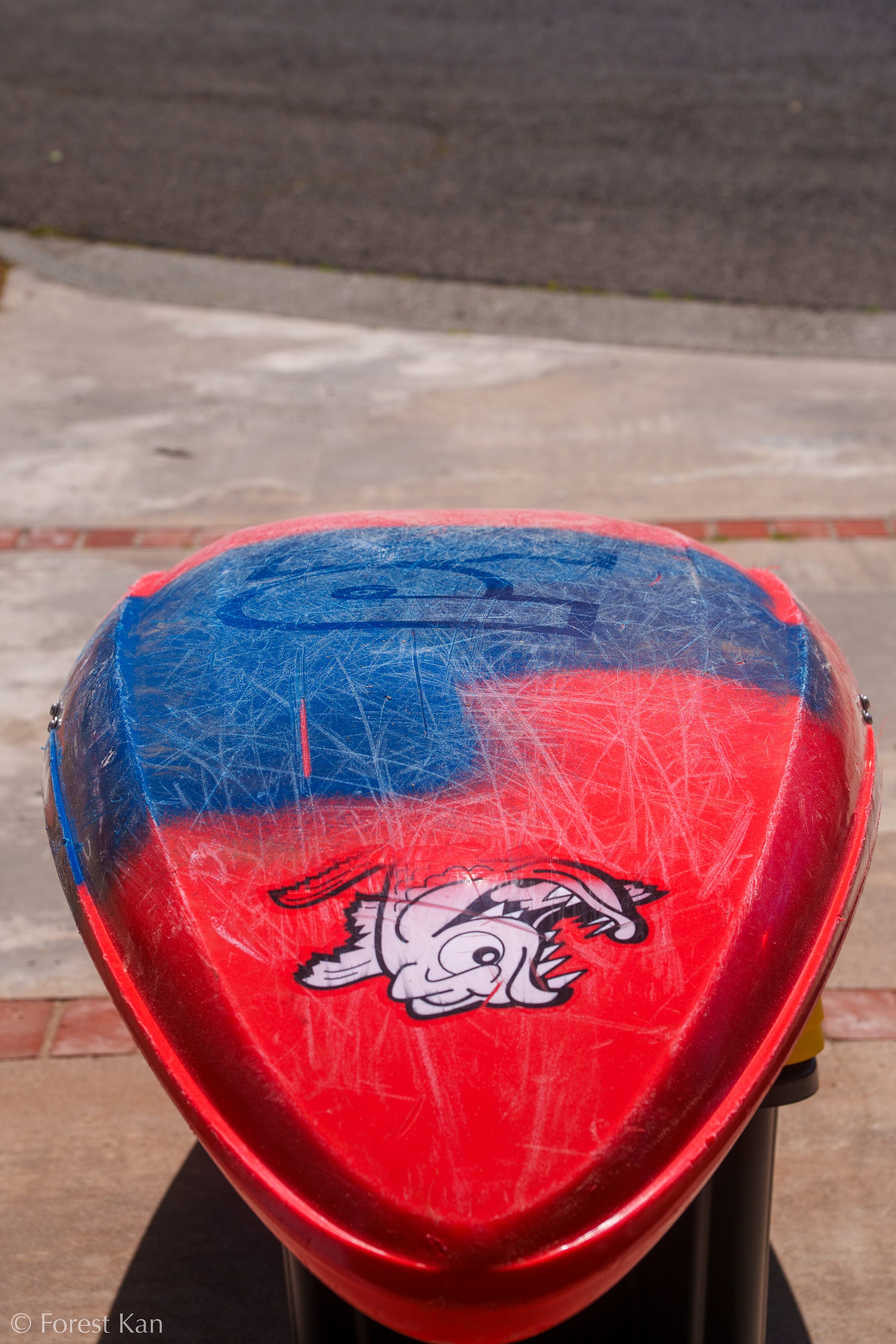
Though I've never been a strong slalom style paddler, I am able to execute low angle pivot turns with some ease (relative to other creek boats). This is pretty useful when screaming into eddies with the intention of breaking up downriver momentum.
Stability, both primary and secondary, is about middle of the road. I wouldn't say this is an extremely stable (which isn't necessarily a good thing sometimes), or extremely unstable boat. Secondary stability is sufficient such that on edge it is forgiving enough to allow for slight adjustments of weight distribution.
A big talking point has been the stern of the boat - in fact Pyranha specifically addresses the categorization of this boat in a recent blog post.
"This is not a half slice - whether a quarter, half, or ¾, the ReactR isn’t a slicey boat, where volume has just been removed from the deck. The ReactR’s tail is not designed to be underwater, but to allow water to slide around it. Soft sidewalls above and below result in minimal pressure buildup from side currents and mean you can move when you need or want."
Another statement from the Pyranha blog:
"The ReactR is not a half (or any fraction) slice; it is a full-fat creek boat, just with agility and an overall design unlike any that has come before."
I would tend to agree with these statements; it's not a half slice or even one of these newfangled "creek slices" like the Puffy Steeze or the Indra. I have ran some things near my personal limit in this boat and have in no way felt held back by the design of the ReactR.
I will however disagree somewhat with the "water sliding around the stern" statement. At normal seat position (center; there are 5 positions to choose from), I found that if I was lazy, the stern would catch similar to a half slice if I did not use proper technique entering and exiting eddies. I remedied this problem by moving the seat position forward 1 setting (and also by being less shitty at paddling). This seat position shift also did not seem to affect how well the boat skips, thankfully.
In an opposite case, I found that loading the stern (when there were no direction changes) could be beneficial. If I mis-timed a boof (remember, no one ever says "boof early") and landed in a pourover, the stern would load and I would almost accelerate forward instead of backendering. However, if I was off axis and changing directions, stern loading often resulted in a backender (see below example).
In terms of width, it is a modern boat, which tend to feel wide. At first, I had trouble bringing the boat up on edge, but as soon as I added seat shims this problem was resolved. Due to my size, I find that most boats I use to require at least a little bit of stack height.
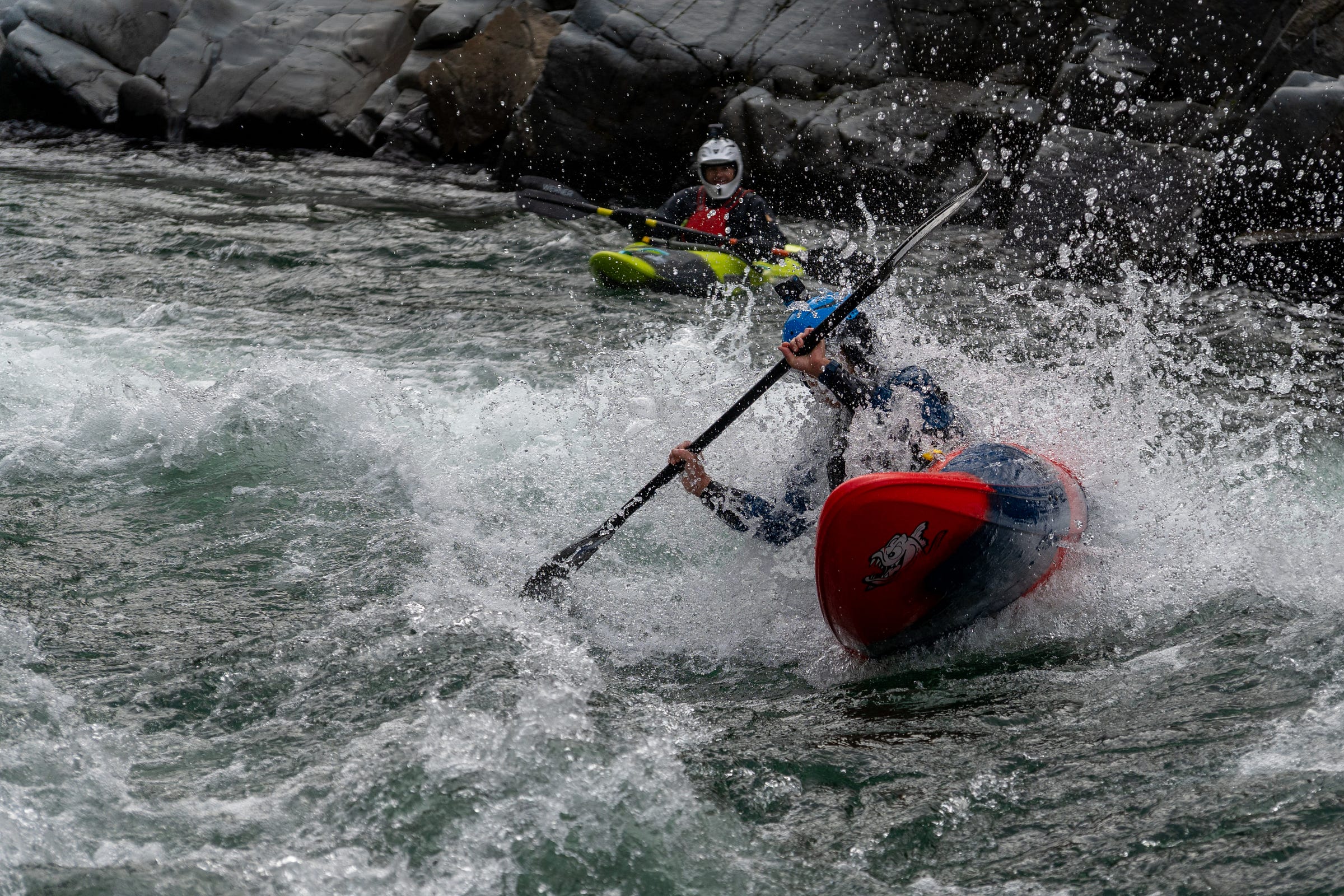
I am not sure if it can be attributed to the stern profile, but I have really enjoyed that I can pseudo “double pump wave wheel” (a technique taught to me by the venerable Cam to keep your boat in contact with water during large wave trains) which I have not been able to do as easily with other creek boats.
Speaking on boofing, it's pretty hard to go wrong with modern boats. At this point in boat design, I figure that most competent paddlers can keep their bow about as dry as a bag of rice over ledge holes. Otherwise speaking, we are at the point on boat evolution where we are allowed to choose how we feel when we boof, as opposed to if we skip.
Skipping out of a drop is one of the great pleasures that I find in paddling - the ReactR allows me to do just that. Whether I land nose down on the bow or actually time a boof stroke correctly for once and land right under my knees, the boat absolutely charges out of drops. I suspect that this is due to the claimed “two planing surfaces.” Whatever the case may be, I love boofing this boat.
At this point in my rambling, I guess I should address this boat’s ability to roll. Though I should caveat this next section with the fact that I don’t think that there are modern boats that are "hard" to roll. It is my (polarizing) opinion that user skill has more to do with whether or not they interpret a boat as "hard to roll" or "easy to roll." I had no issues with rolling this boat - back deck, front deck, sweep, C to C, Chicago deep dish, Detroit style, etc, it didn’t matter.
Physical Attributes
As with most modern boats, the ReactR has quite a bit of knee clearance, which I find more comfortable than the "splayed out" feel (think sitting in butterfly pose) of older boats.
Another huge upgrade is the Elite Outfitting. It is no secret that the previous Stout 2 outfitting utilized by the earlier generation of Pyranha boats was not so well received. A lot of people (including me), had issues with ratchet slippage, backband breakage, as well as hip pads that would easily shift, a seat that was damn near impossible to move, and a backband located in the southerly plumber's crack region. Not to mention the heavy padding required to prevent your kneecaps from de-skinning themselves against the inside of the hull.
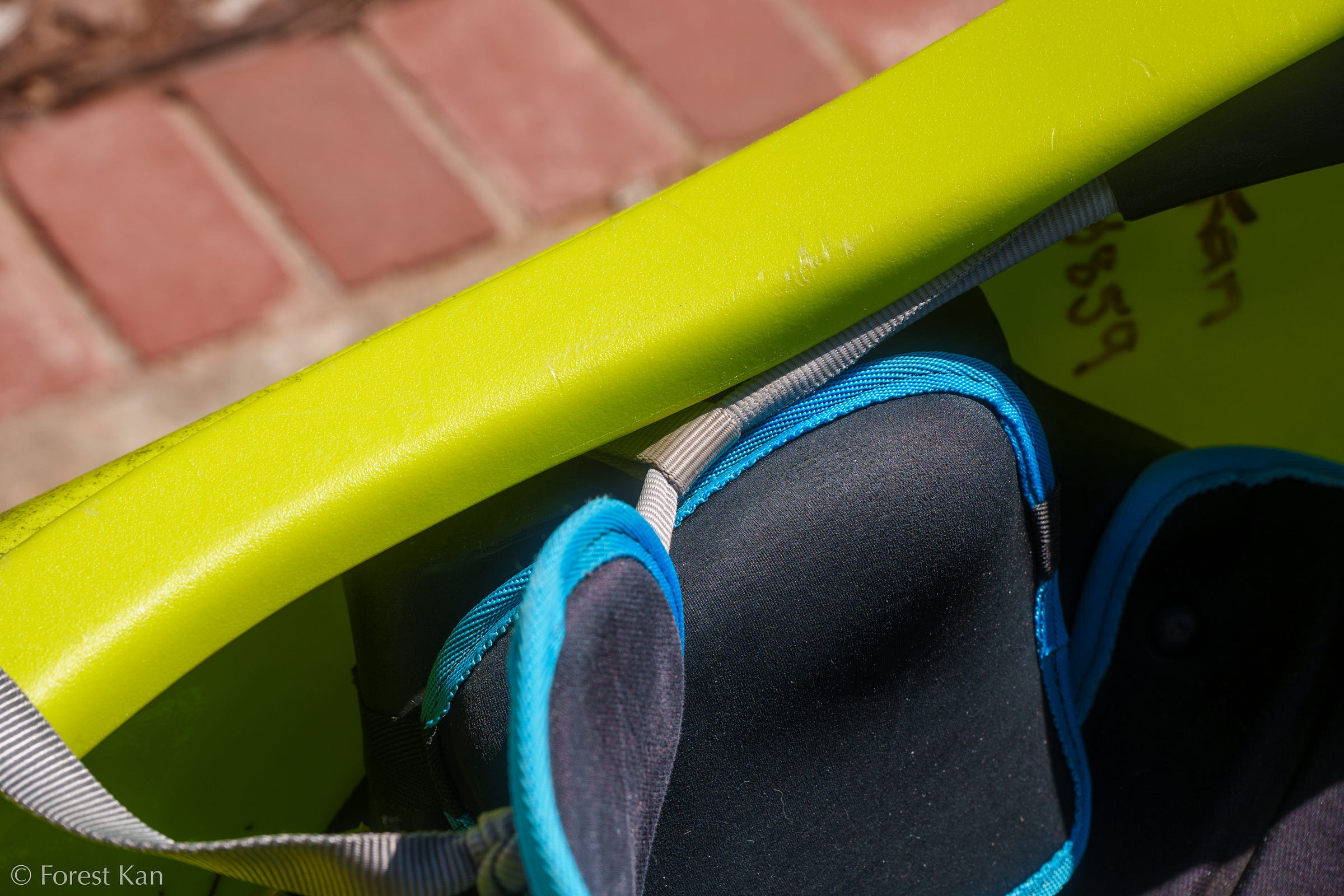
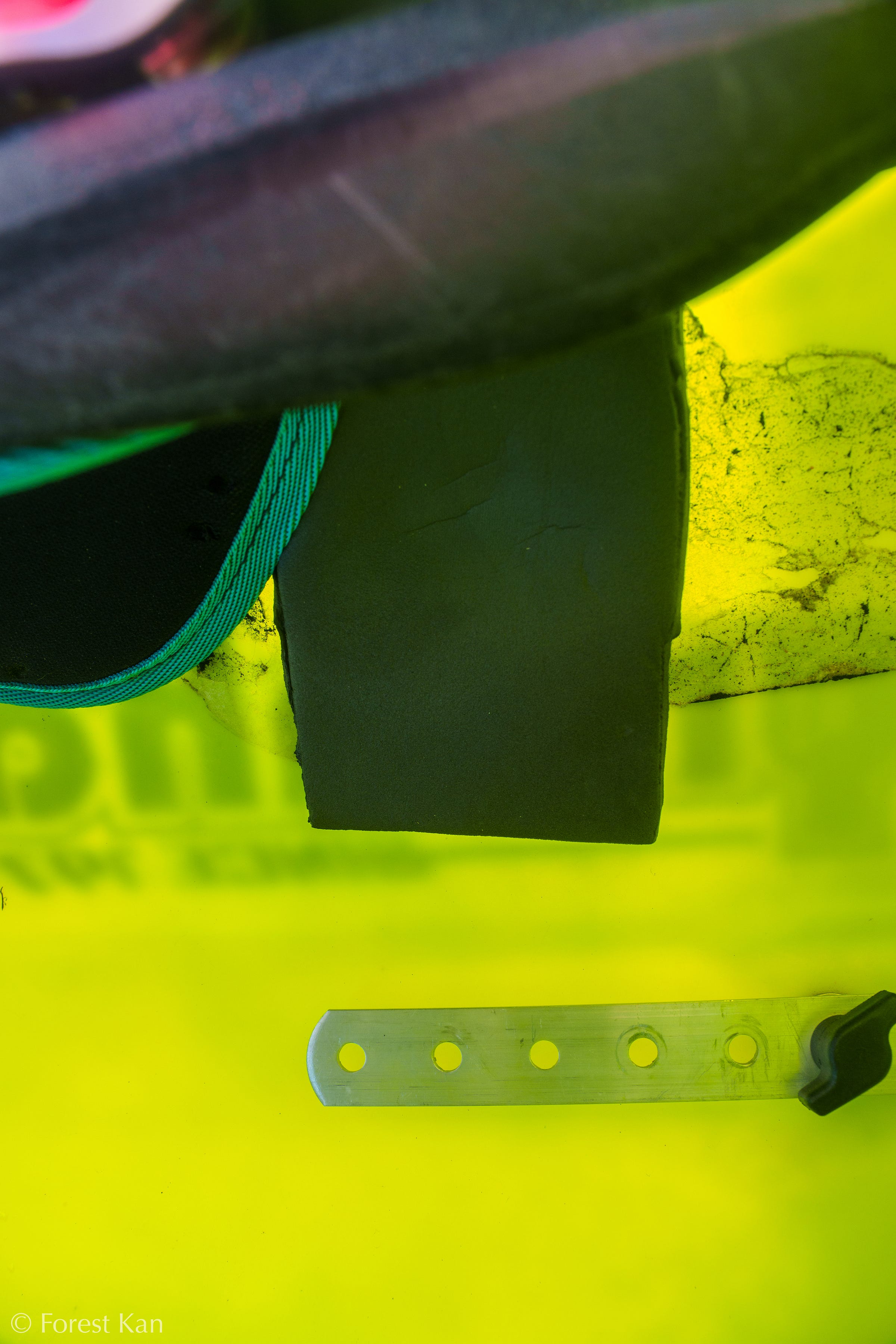
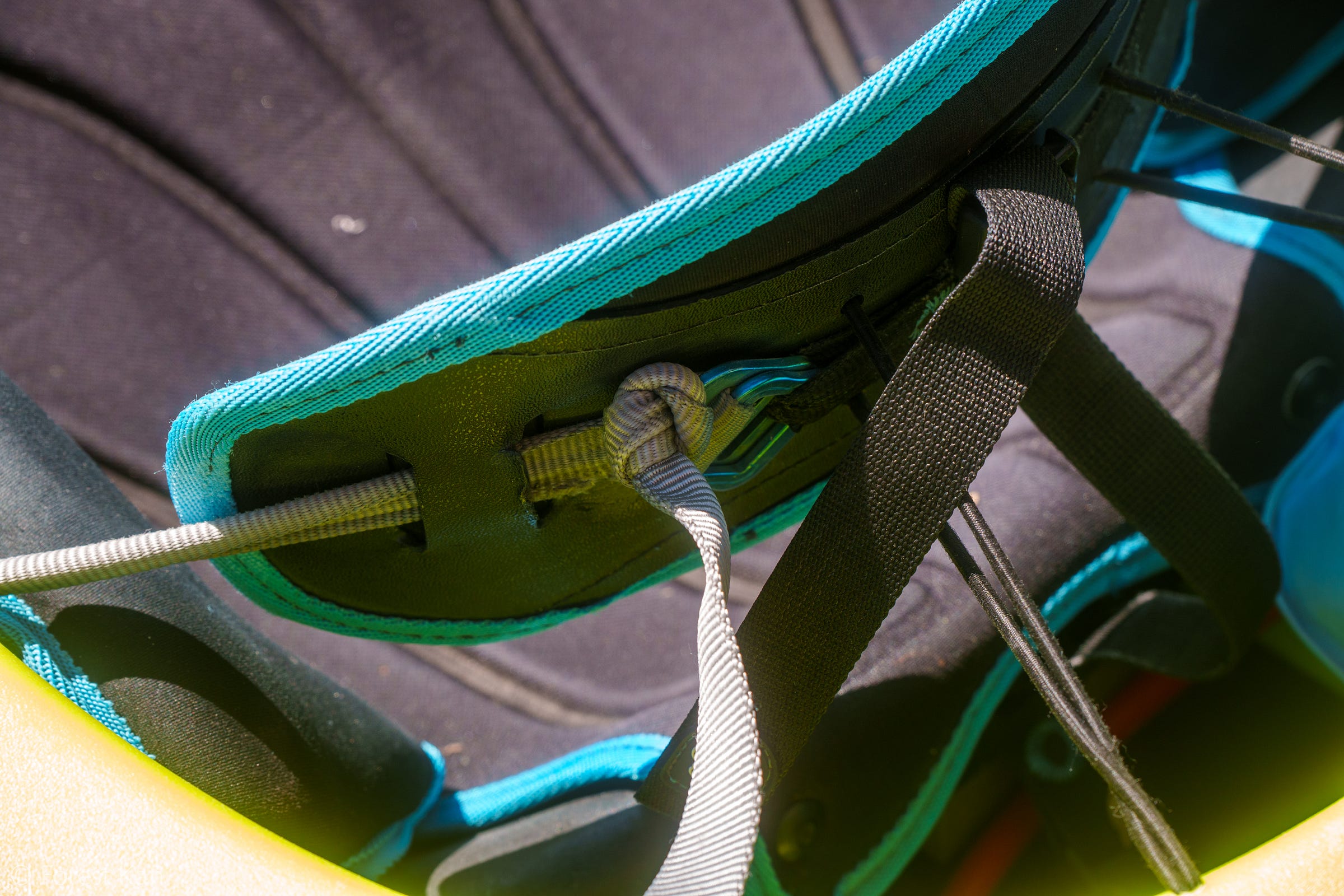
A lot of these problems were solved via various DIY hacks, like raising the backband with a piece of webbing attached via the seat mount bolts. While this did solve the low-backband problem, it introduced a wear point which I can personally attest to have lead to the premature wear and subsequent breaking of my backband at the most inopportune time.
I also distinctly remember wanting to move my seat back on my Ripper 2 - sitting in my cold garage blindly fiddling with the tiny nuts and bolts, cursing the designer. I eventually did get the seat back, though a long while later. Suffice to say this seat position adjustment system was sub-par (also, just three seat position options?!?!).
So I was relieved to see the new Elite Outfitting which moved to a cord-and-cleat like system for the backband, and a far simpler seat position adjustment mechanism. The cord-and-cleat system is effective and secure. It is also a notable upgrade over the competitor's system in that you pull the cord towards yourself to tighten. Also, somehow in the redesign the vertical seat position adjustment became effective again.
In terms of outfitting setup - I run two seat shims under the waffle padding, four hip shims per side (yeah haha I get it I’m small), and three bolt holes back from shortest on the bulkhead. My backrest is mid height, and my seat position is one setting forward from center.
So far, I have few complaints about the outfitting, mostly minor. Number 1, the bulkhead rails seem like they are designed for people who have longer legs than I. I wouldn't say I have short legs for my size (remember, 29-30" inseam at 5’6”), but I found myself at 2-3 rail holes from the shortest bulkhead setting. I guess this could be remedied by adding another foam block, but that's not included with the stock outfitting kit and would constitute an additional $17 cost.

Number 2, I'm not a fan of the choice of aluminum stock for the rails, specifically the attachment point of the aluminum rail to the brass bulkhead threads. Bulkheads are subject to extreme forces; I have seen multiple failures in my group of friends from a fatigue point located near this attachment point. Visually, the Elite outfitting bulkhead looks similar to the Stout 2, and no word from Pyranha regarding any changes to the design. I don't have any suggestions to solve this problem.
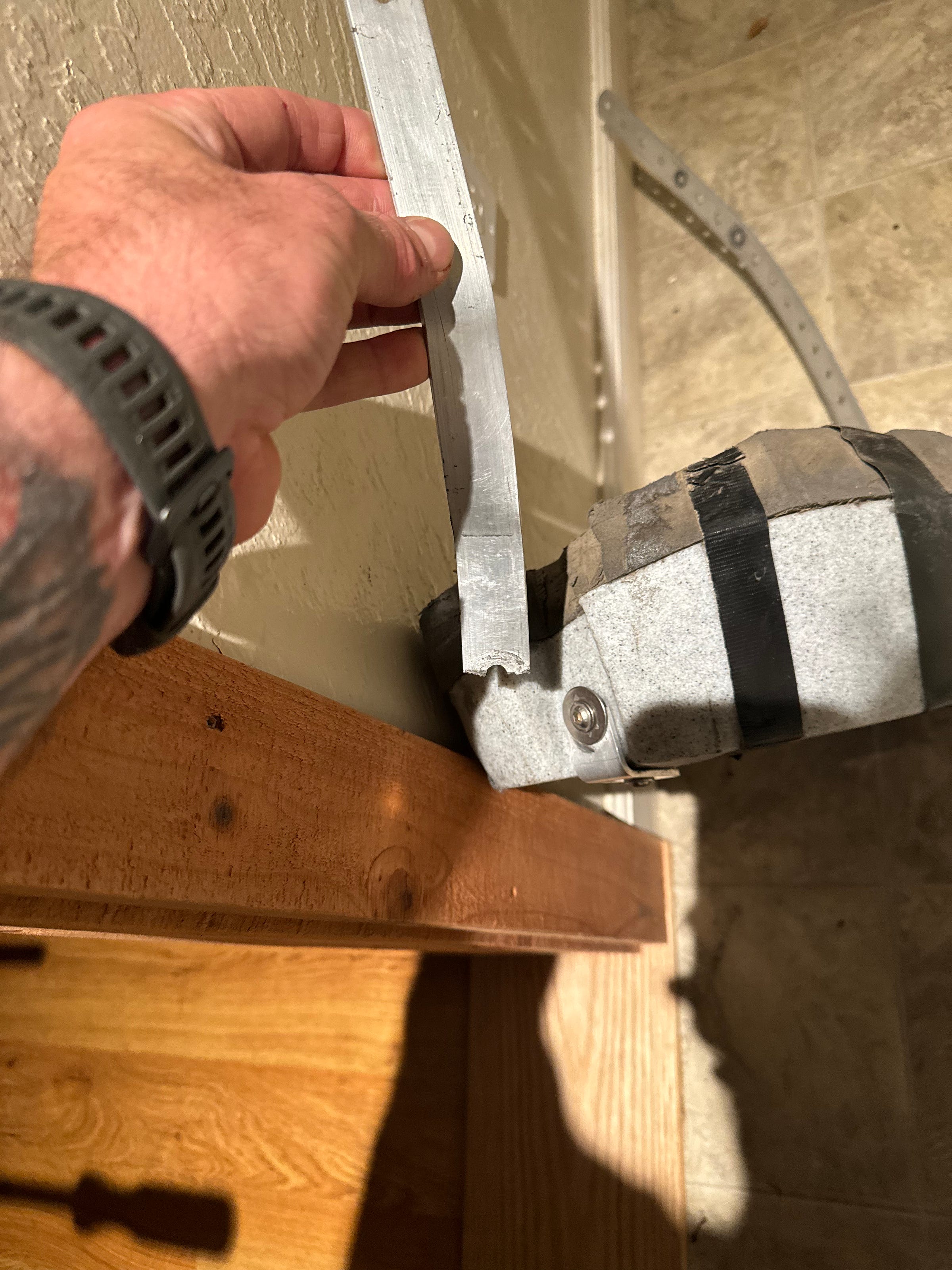
On the positive points, I did like the padding that is included with the thigh hookers - they are a much needed upgrade as I found myself installing a significant amount of foam in the Stout 2 setup to prevent knee knocking. It also appears that Pyranha has revised their cockpit shape such that an XL Immersion Research skirt is a lot easier to mount - a much appreciated detail.
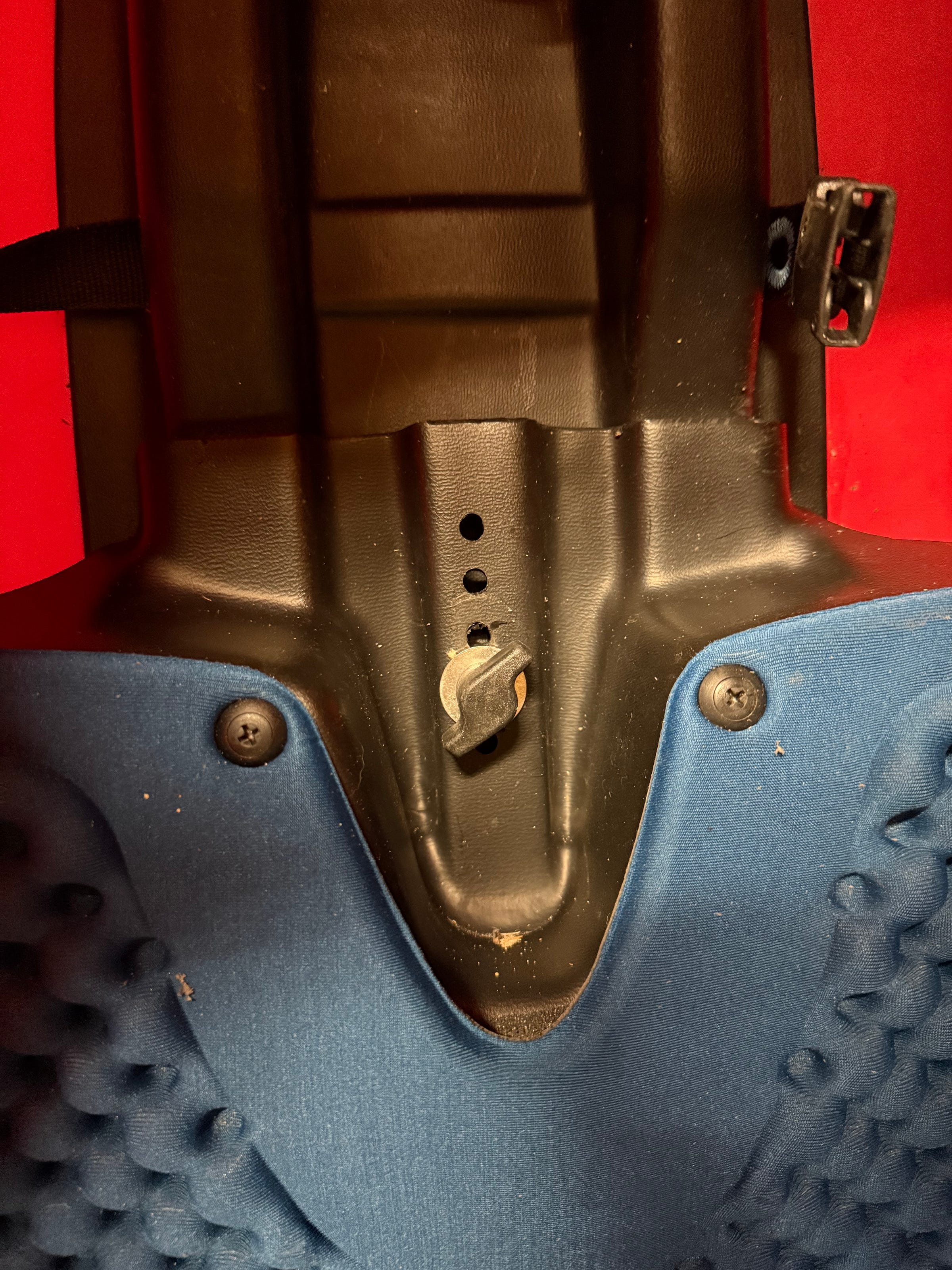
I also can’t sing the praises of the seat adjustment system enough. One wing nut and a couple of loosened bolts, et voila, your seat position is changed.
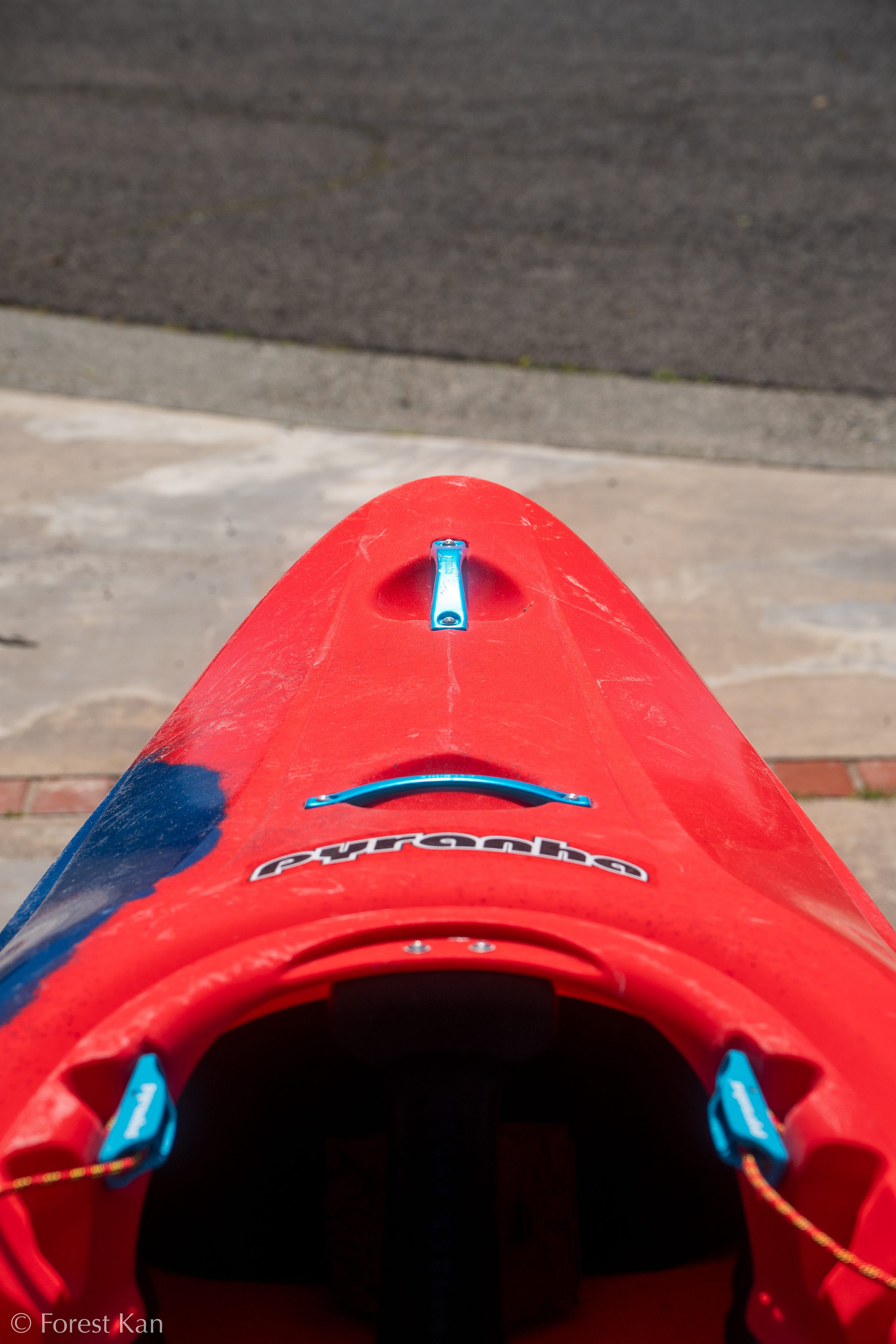
It is an odd preference, but bow styling matters to me - I prefer the “sharp” nose of the ReactR, as opposed to the more rounded out nose of say, the Gnarvana. This is something I enjoyed about my Code - the shape of the bow is something you stare at the entire day and a sharp bow simply inspires confidence. I will take a sharp bow with a long axis grab handle over a rounded nose and short axis grab handle.
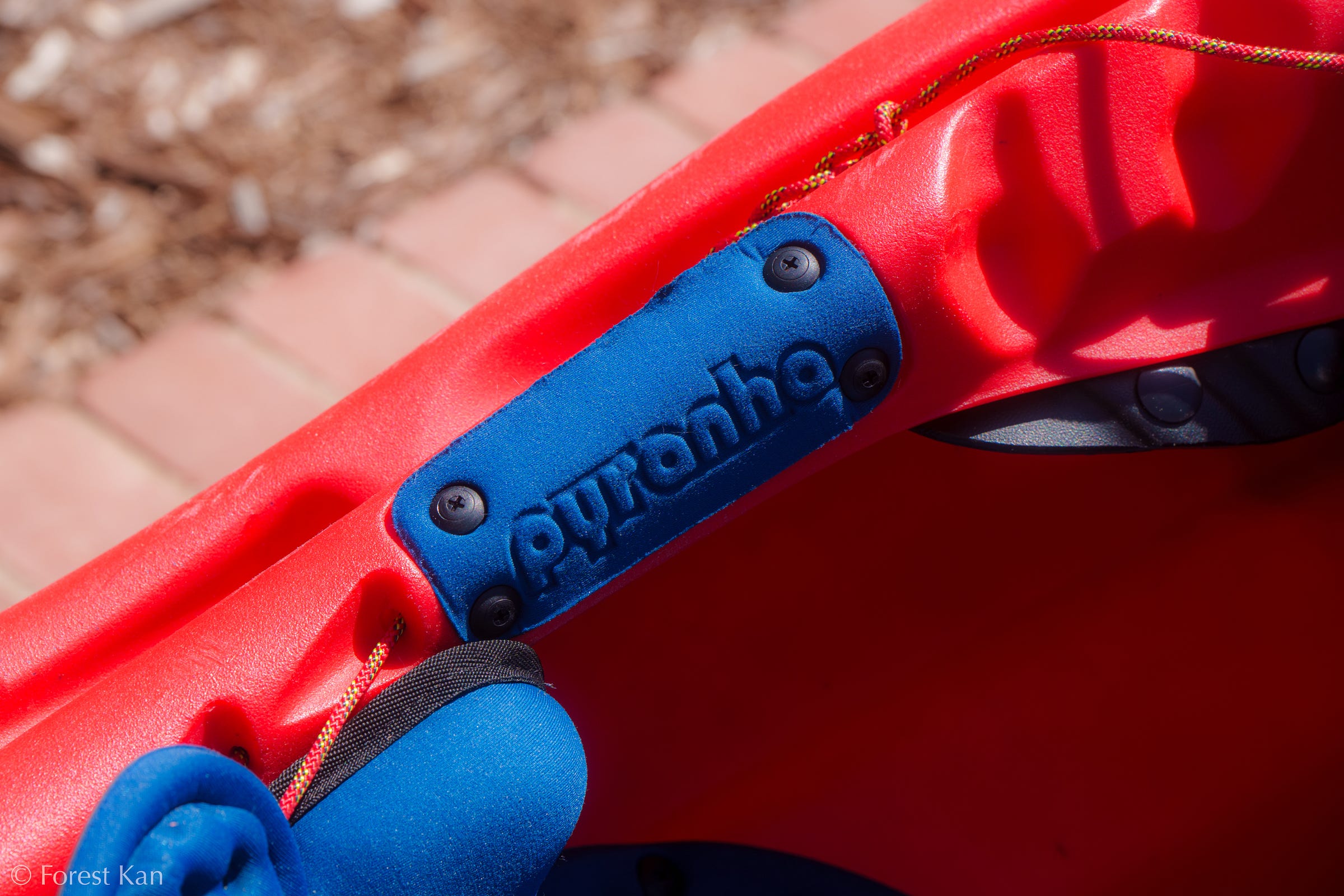
For this specific boat, I cannot comment on the long term plastic durability. Though speaking anecdotally, Pyranha plastic is generally considered pretty decent. Personally, my Ripper 2 has nearly 100 days on the water and is still doing just fine.
Comparison
While I tried over 10 half slices to eventually land on the Ripper 2 Small, I have less experience with the wide plethora of creekers on the market today. I have tried a Jackson Flow Medium, Gnarvana Small, Dagger Code Small, and Indra Small/Medium. So the following comparison is quite limited in scope, but better than nothing?
The Flow was quite speedy, almost comparable to the ReactR but not quite as fast. It also had less rocker which meant more effort required to boof. The Gnarvana was similar to the Flow in terms of speed and it boofed much better, though requiring far more effort to move around the river. Both Jackson boats required significant lean to bring the boats up on edge (due to the drop chines?). In general, the ReactR requires less perceived effort to drive it around the river.
The Dagger Code was my main Creek boat for just under a year. To me, the Code was very stable and confidence inspiring, but tended to get knocked around easily in pushy water. I suspect this was partly due to pilot error, but also may have been due to the lack of sharp chines. I will say that the ReactR boofs similarly to the Code (in terms of skip), but the Code feels like you have to actively corral the bow angle on the few key strokes leading up to the boof.
I didn’t particularly care for the Indra. The Small/Medium in theory should have worked for my weight, but it felt too large and unwieldy. The stern tended to load like crazy, yet I did not feel like there were any benefits to it. I’m sure that a few more days in the Indra would have allowed me to dial the outfitting and get the boat where I wanted, but my initial impressions were poor. Compared to the Indra, the ReactR feels like an entirely different category of boat.
Who is this boat for?
Beginner paddlers can benefit from the stability, predictable chines, and rocker of this boat; I know a few budding Class III paddlers that swear by this boat. I also believe that the boat truly comes alive the harder it is driven. Therefore I think this boat will be most effective in the hands of intermediate and advanced paddlers. If you enjoy boofing, running the shit, and skipping out like no other, then this boat is for you. If you like driving your way down river, look no further.
So to answer the two questions posed at the beginning of this review - yes, and yes. This boat does live up to the hype, and I do think it is a significant leap forward in terms of creek boat design.
TLDR: If you’re looking for a nimble creek boat that will take care of you and enable skips like a crappy CD player, look no further. The ReactR is an agile, smooth creek boat that boofs well and comes alive in the hands of an intermediate to advanced paddler.
Do you have a ReactR? If so, let me know what you think of the boat down below in the comments.





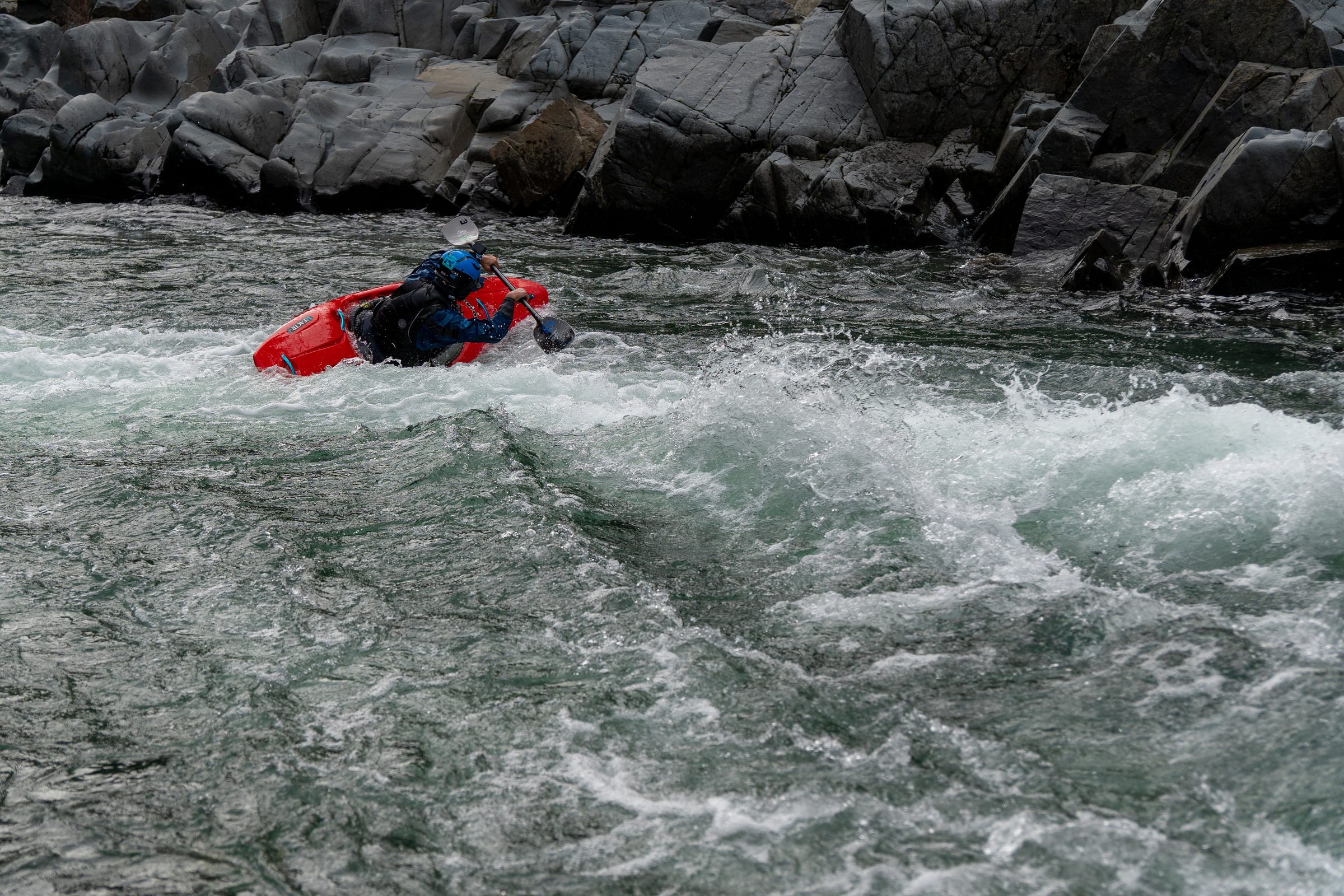
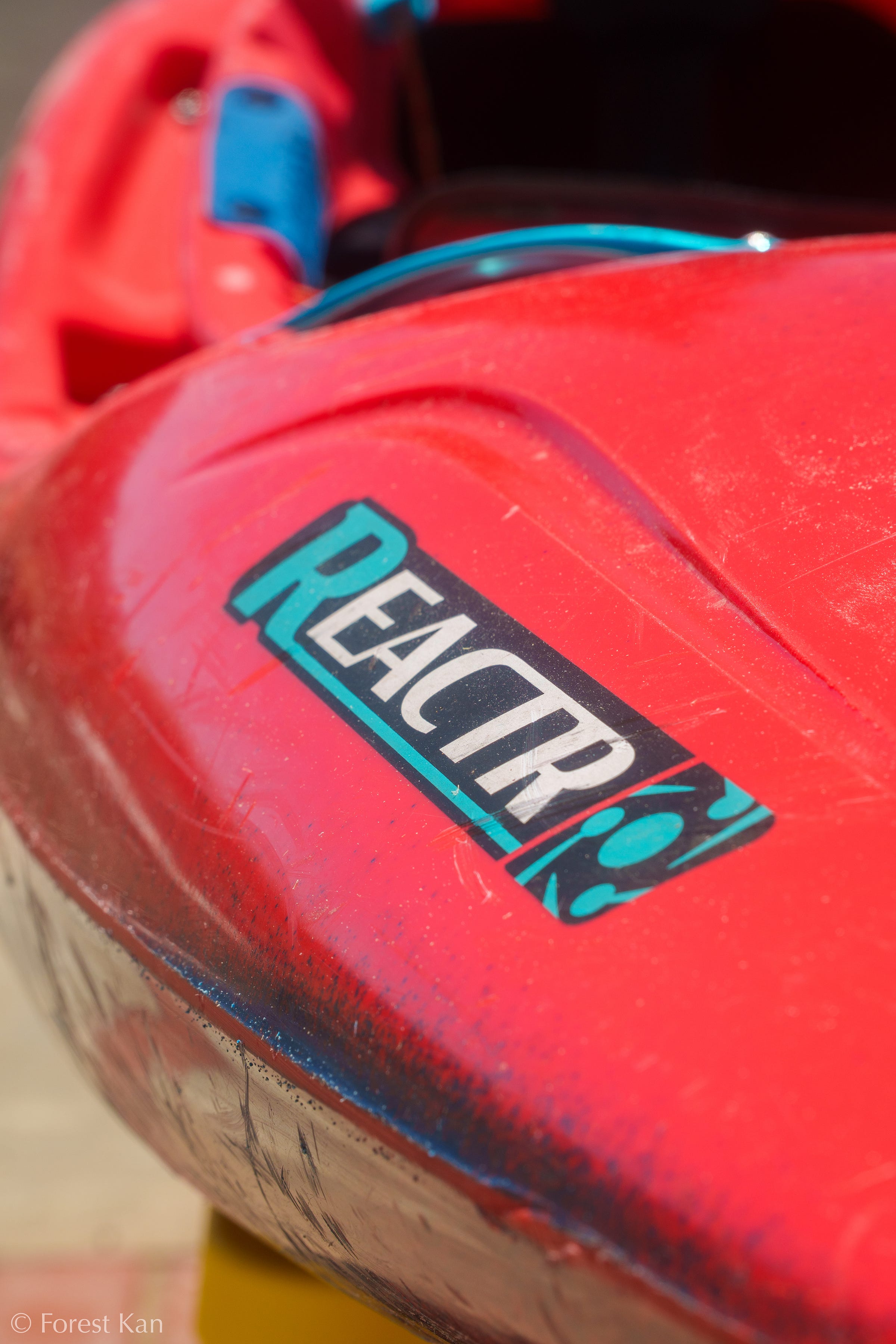


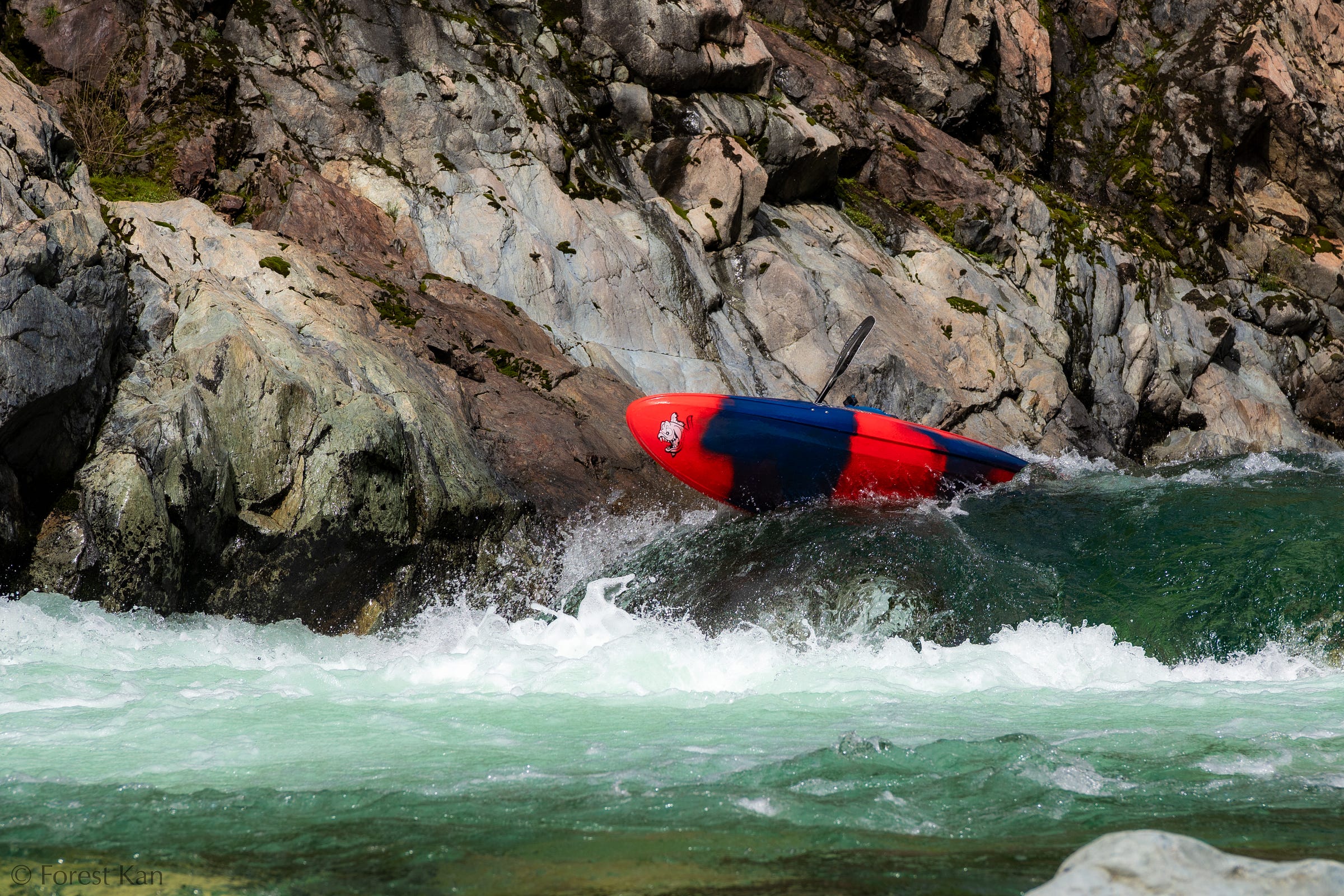
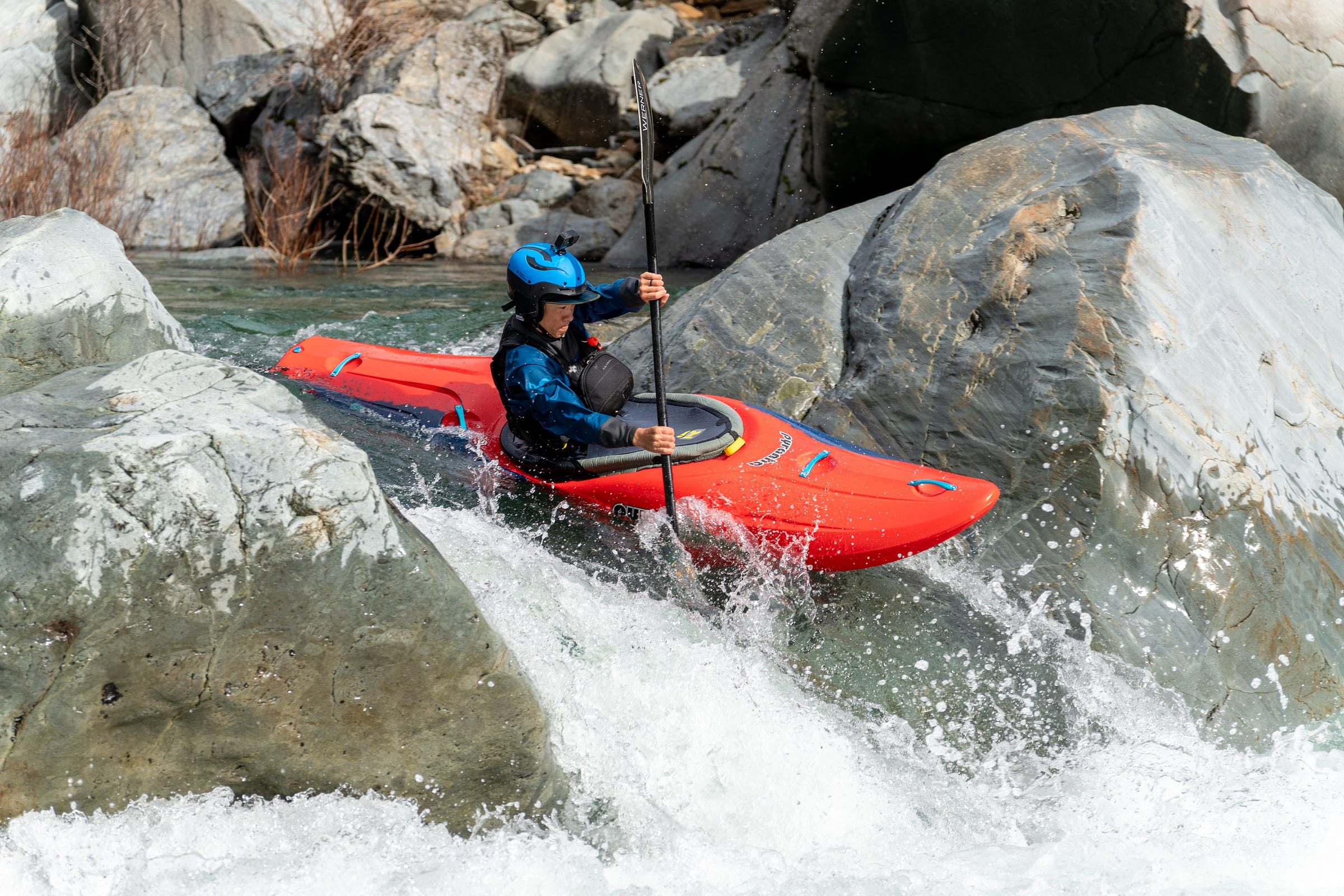
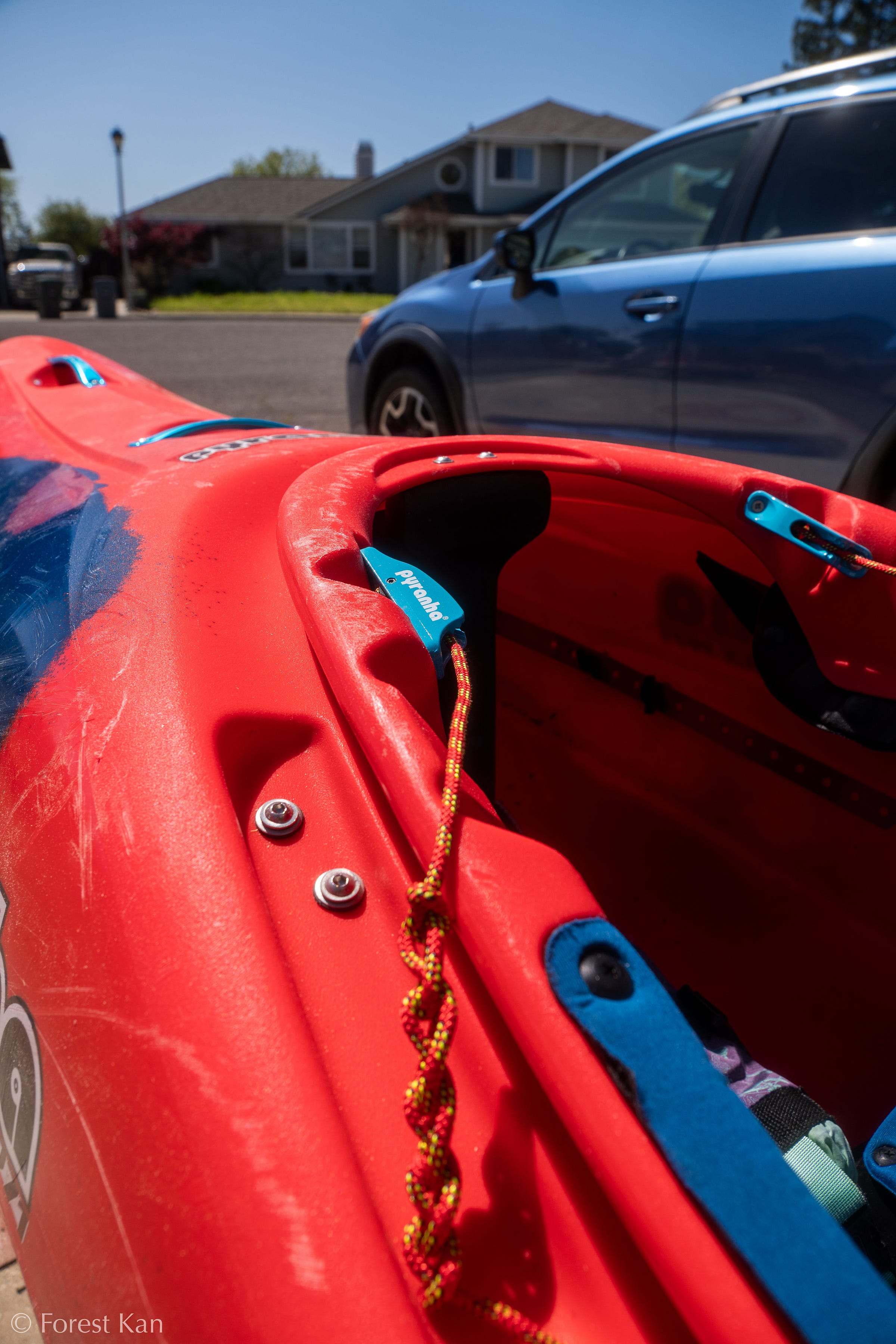
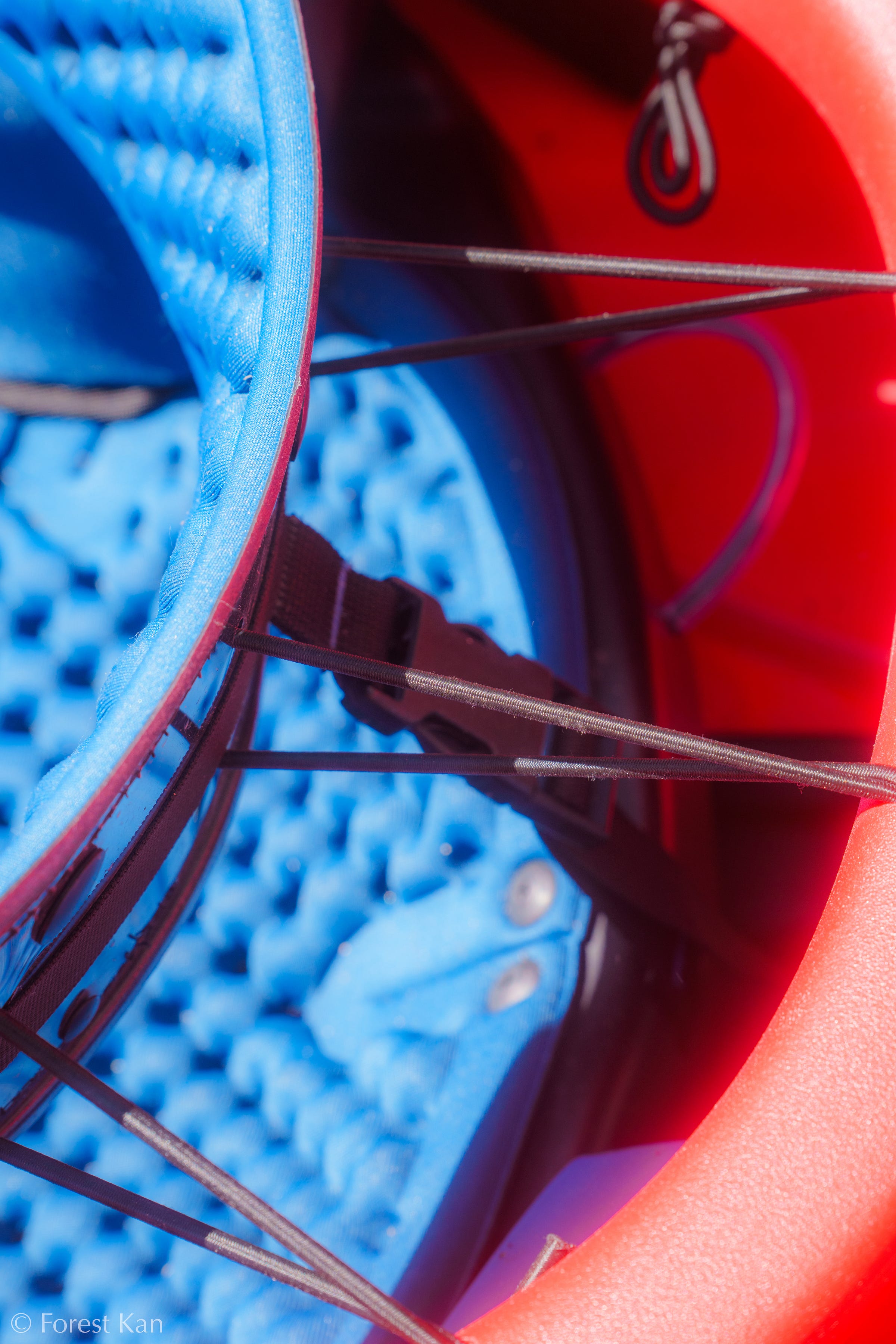
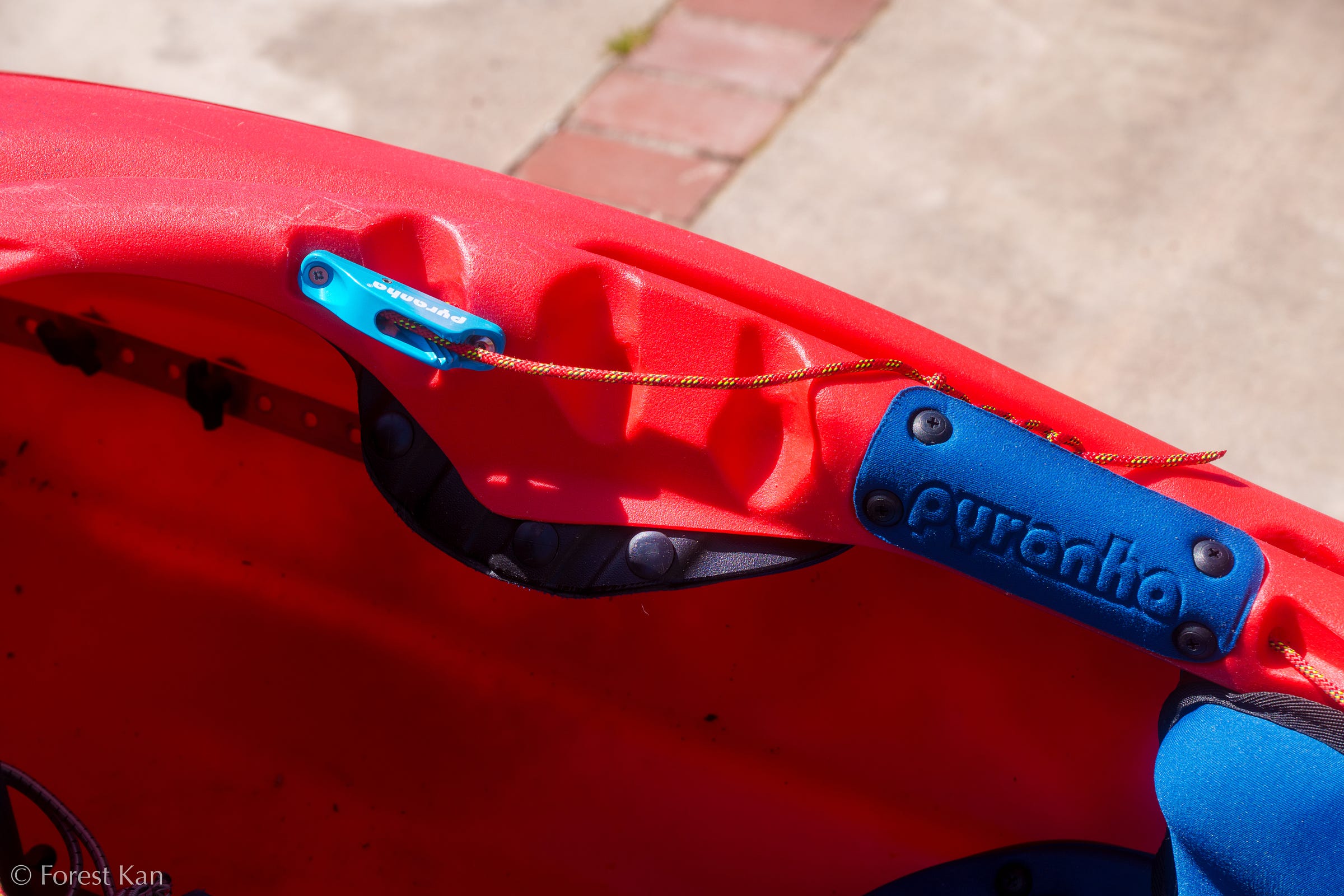
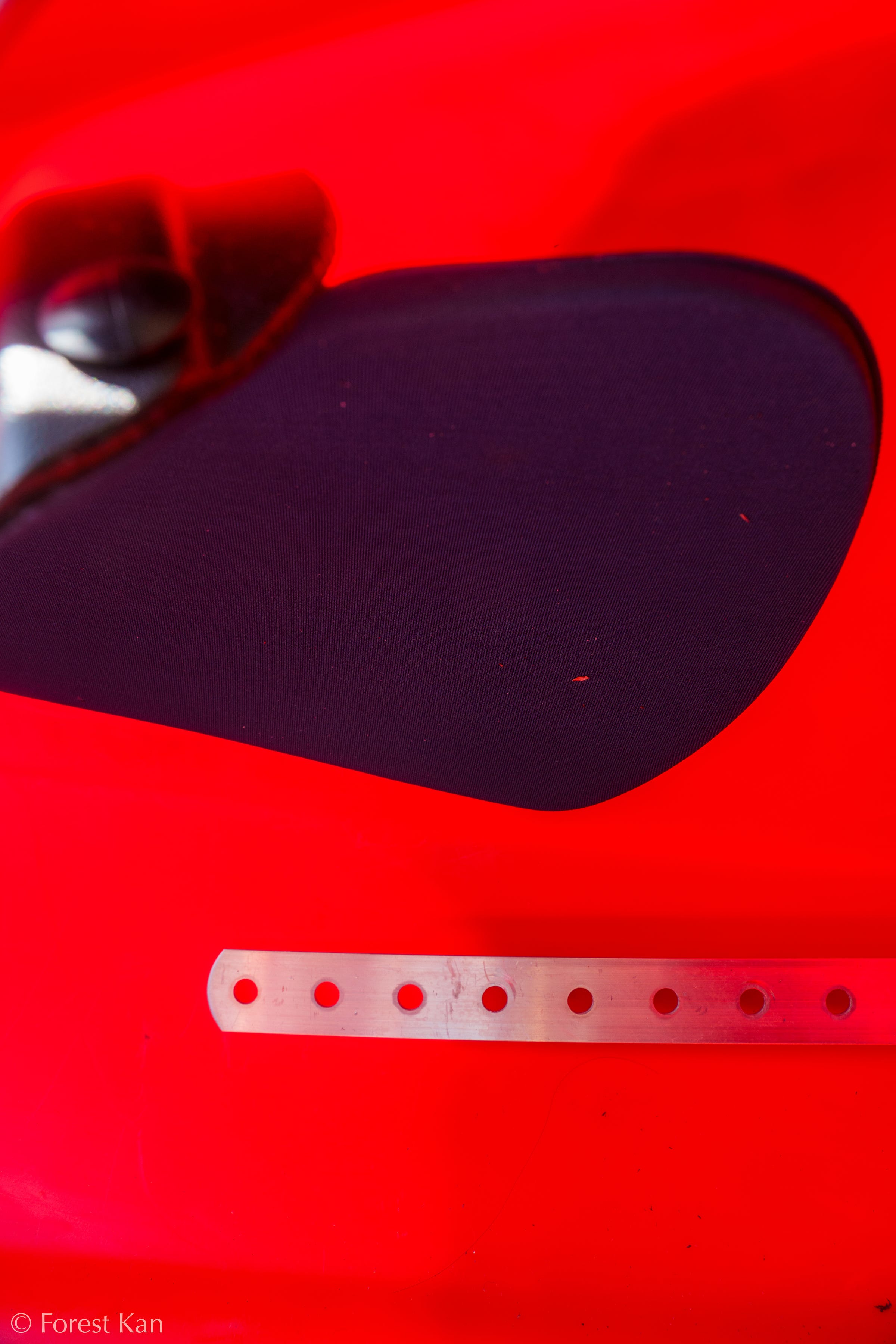

It's cool these smaller creek boats are coming out. Seems to help bridge the gap of boat sizes and body sizes. I am sure there will be a point in your boating career where you sit at the bottom of a rapid, and say just under your breath, shaking with fear, "holy shit I need a bigger boat." Till then these boats like the ReactR are prefect. You need to let me paddle one!
Been thinking about a creeker, specifically the Reactr. Great review. Thanks for helping me spend more money, I don’t have yet. Maybe later in season.